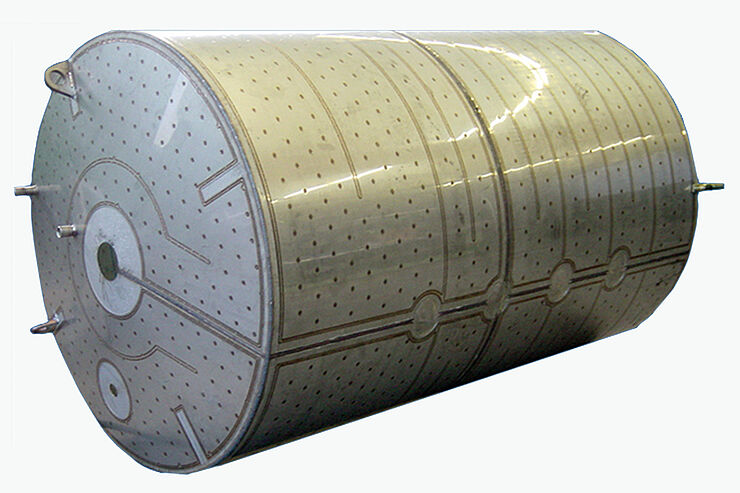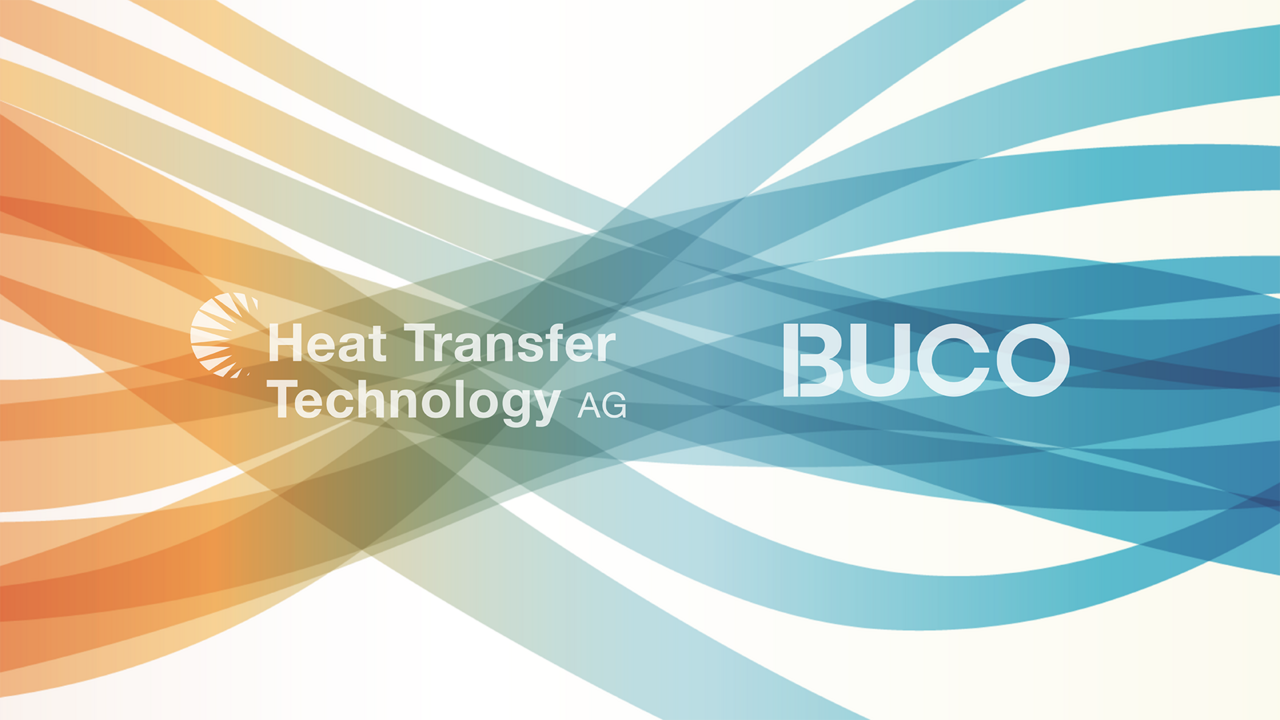
Dimple jacket
Laser-welded dimple jackets integrated into process or bulk tanks or as clamp-on panels of existing tanks
As a laser-welded dimple jackets‘ tanks manufacturer, specialized in dimple jacketed tanks and reactor plates for process, storage tanks or pressure vessels, we are experienced with dimple plate tanks for more than 40 years. Thermal heat exchange surfaces are utilized on vessels for controlling temperature and quality of the contents of the vessel.
Jacketed vessels are used in many industries. Heat exchange surfaces can be designed either for heating or cooling. They can be used to remove the elevated heat of reaction (heat reactor vessel) or reduce the viscosity of high viscous fluids.
Pillow Plate: Why is it cheaper to produce than a Shell & Tube?
Laser-welded dimple jacket advantages
- High heat transfer coefficient with low pressure drop.
- No expensive double shell or half pipe construction.
- Less weight than half pipes.
- Low production costs due to automated welding processes.
- Low material costs due to the use of thin metal sheet materials.
- No surface damage on the inside of the tank due to the laser-welding process.
- No cost effective grinding or polishing of the inner surface of the tank inside in case of pillow plates.
- Homogenous and conciliatory tempering of products using pillow plates.
- Long lifetime due to individually choosen materials.
- Welding contours of pillow plates freely programmable.
- Any design possible according to application criteria or demand.
- Kind of weldings for pillow plates free programmable. Cut-outs for pipes, legs. etc.
- Integration into vessels for mechanical and thermal double function.
- Smaller quantities of refrigerant or heating medium due to small plate volumes of pillow plates
- Clamp-on plates for existing tanks.
- Reliability.
Priority advantages
- Individual designs of a single and double embossed laser welded dimple plates in size, shape and material.
- Any channel design possible according to application criteria or demand for cooling and heating of industrial processes.
- Kind of weldings for dimple plates free programmable. Cut-outs for pipes, legs. etc.
- No surface damage on the inside of the tank due to the laser-welding process.
- No cost effective grinding or polishing of the inner surface of the tank inside in case of dimple plates.
- Low material costs due to the use of thin metal sheets for laser welded dimple plates.
- Less weight than half pipes for cooling and heating of industrial processes.
- No expensive double shell or half pipe construction
- Smaller quantities of heating or cooling medium due to small plate volume flows
- High heat transfer coefficient with low pressure drop
- Integration into vessels for mechanical and thermal double function.
- Clamp-on plates for existing tanks.
- Lower tendency for fouling.
Pillow Plate technical data
- Manufacturer of sizes up to 14000 x 2000 mm.
- Manufacturer of cylinders made of one piece: diameter from 600 – 3800 mm.
- Dimple jackets for conical, as well as for elliptical pressure vessels' heads.
- Up to 50 bar operating pressure for pressure vessels dimple jacketed tank walls.
- Pressure vessels wall thickness 0.8 – 1.5 mm with dimpled plates on the outer side.
- Up to 12 mm groundplate with single embossed dimple plate profile on the inner side for pressure vessels.
Pillow plate jacketed vessels surface and quality benefit
The large dimple jacketed surface ensures safe process control with homogeneous temperature control. The dimple jacket design as tank cooling jacket allows the temperature control of products during other process steps. This saves a separate thermal process stage and often increases productivity and product quality.
Manufactured tanks out of laser-welded dimple jackets have also less weight, above all, because of less stainless steel material. Tanks can be manufactured cheaper by even higher product quality.
How to manufacture a dimple jacket?
Inflation and dimple plate profiles
Complete cylinder tanks are made from laser welded panels, of those the profiles have not been blown up then. The flow profile of the heat exchange panels will be blown up after the tank has been build. The later dimple plate tank or pressure vessel inside is not damaged by the laser welding process. Surface treatments are generally no longer required. Any shape of cut-outs for pipes etc. can be foreseen. The closed-loop heating system of a jacketed vessel allows for great convenience in batching processes. Many industries require that a vessel be both heated and cooled as part of a single process. A well-designed jacket with a thermal fluid system is a seamless way to achieve the necessary temperatures.
Pillow plate screw connection version
In case of screw connections these should be re-tightened during operational conditions after a certain operational period. The heat exchange plates do not have any electric connection. During the operation of the laser-welded dimple jacket with liquids a venting facility for the plates, preferably above the upper piping, should be arranged, if the order related design does not include such a possibility. As per operation of the laser-welded dimple jacket with refrigerants an oil removal device should be installed via the lower pipe, if the refrigeration process makes this necessary and if the order related design of the plates had not considered such specification.
Pillow Plate specifications
- As a dimple jacket design for water, glycol, thermal oil or steam inside the dimple jacketed vessel.
- As tank cooling dimple jacket in form of dimple plates for all refrigerants.
- Used as pump- or gravity- or dry expansion system for pressure jacketed vessels.
- Channel design of the dimple jacket according to individual calculation by experienced engineers.
- Carbon steel or stainless steel as: AISI 304, AISI 316L, AISI 316Ti up to titanium.
- Surfaces: stained, ground, polished.
- Certificates according to TÜV , PED , TR CU (GOST) and ASME.
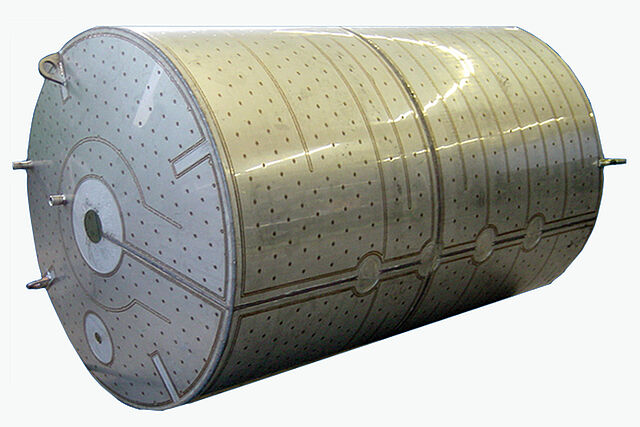
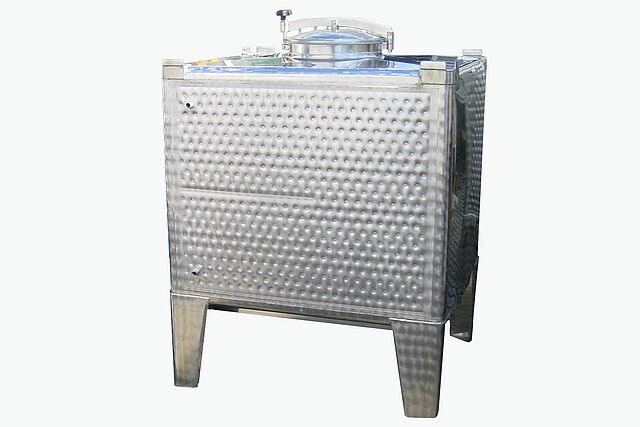
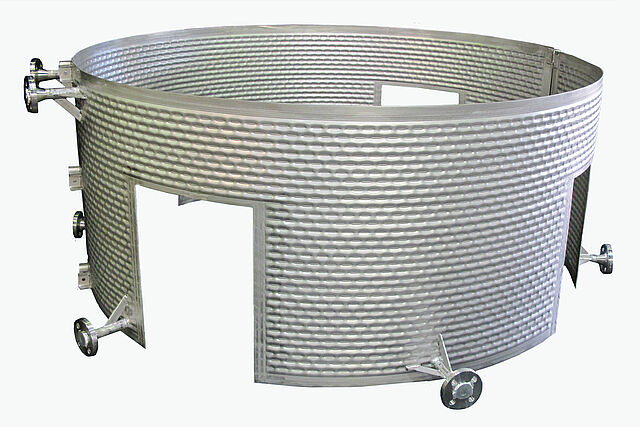
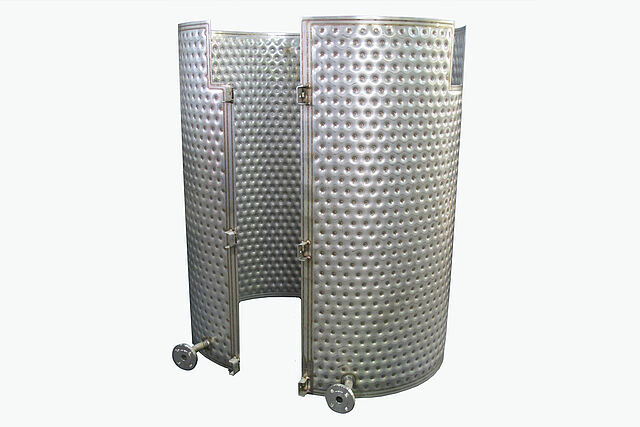

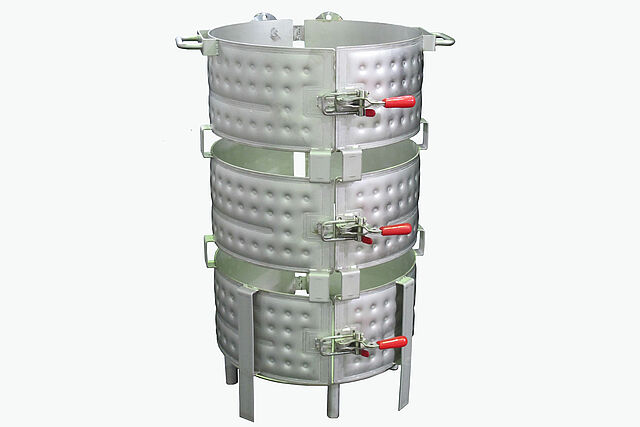
Pillow Plate applications and benefits
Homogenious tempering of liquids in process tanks. Such as in milk tanks, wine tanks, beer tanks, reactor vessels and pharmaceutical tanks.
For over 50 years BUCO tank plates and pressure vessel walls.
